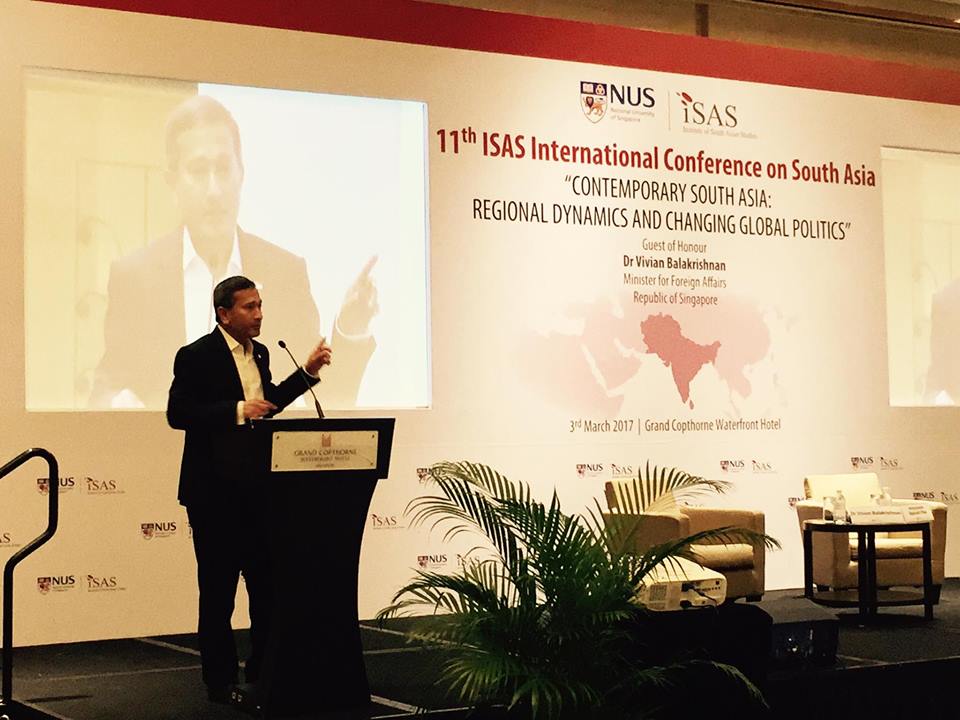“South Asia and Southeast Asia (SEA) have the demographic, economic, cultural and technological capital to succeed and thrive [in the present times filled with uncertainties],” said Dr Vivian Balakrishnan, Minister of Foreign Affairs, Singapore, who was the Guest of Honour at the 11th Institute of South Asian Studies (ISAS) International Conference held on 3 March 2017.
In his address, Dr. Balakrishnan highlighted the problems and challenges that are affecting societies worldwide. “The global consensus on the benefits of free trade and economic is broken. There are clear bones of xenophobia and hyper-nationalism that prey on the fears of the local populace, [and all these] have resulted in a pushback against globalisation and free trade.”
In addition, digital transformation, while enabling a hyper-connected world, is also causing disruptions to economies, transforming the way of life and how we organise society.
But despite all these, “[South Asia and SEA] represent areas that have not yet harvested the demographic dividend,” said Dr. Balakrishnan. He then outlined three points to explain why he thinks these two regions have so much potential.
Firstly, these two regions have youth on their side. “There is a median age of 29.1 in South Asia and 26.4 in SEA. By 2030, more than a quarter of the world’s working age population will reside in South Asia and SEA.”
The second point is that while historically, connectivity had been a challenge in the pursuit of cross-border initiatives, advances in technology and digitalisation have eliminated this barrier. Today, with land, air, sea, and digital connectivity, these barriers are no longer effective.
The third and final point is the strong economic complementaries between South Asia and Southeast Asia. In both regions, there exist a process of middle-class expansion, which “means an increase in demand for more sophisticated goods and services.”
“We are moving past the age of mass production where everything looks the same. We have moved into] the age of mass customisation; [we want to buy] something that is different, that is unique, that has cultural resonance, and yet sufficiently different to be novel,” said the Minister.
For South Asians and Southeast Asians, “we are sufficiently similar to be able to recognise the familiar echoes (of history and culture), yet sufficiently different to make ourselves different and interesting. So even as the fourth industrial revolution comes, we can capitalise on cultural similarities and differences, by arbitrating and understanding these differences,” he added.
In his concluding remarks, Dr. Balakrishnan said that Singapore is a strong supporter of the Regional Comprehensive Economic Partnership (RCEP), which includes India and China. “In fact, what we are really working for, is a free trade agreement with the Asia-Pacific. That will completely transform the economic dynamics at a global scale. [We believe in] an integrated world with low or non-existing barriers; an inter-connected world where we are interdependent and therefore have a stake in each other’s success, greater investment in collaboration and win-win outcomes.”



